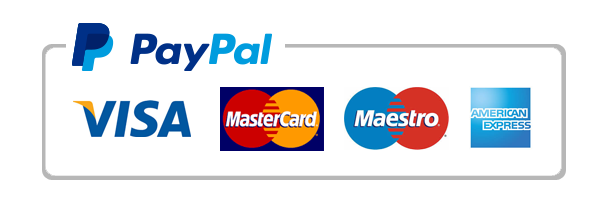Week 4 ion channel —2 Peer Response 800w. due9-26-23
Instructions:
Please read and respond to the two peers' initial postings for week 2 below. Consider the following questions in your responses.
Compare and contrast your initial posting with those of your peers.
1. How are they similar or how are they different?
2. What information can you add that would help support the responses of your peers?
3. Ask your peers a question for clarification about their post.
4. What most interests you about their responses?
5. Summaries at least 1 evidence based article that supports there point.
Please be sure to validate your opinions and ideas with citations and references in APA format.
·
Response 1 400 words mam
·
·
Differentiate between the opening of a ligand-gated ion channel and a voltage-sensitive ion channel.
· In the nervous system, there are two important types of ion channels: voltage-gated ion channels and ligand-gated ion channels. Both of these ion channels play crucial roles in transmitting electrical signals, often referred to as messages, throughout the nervous system. Each type of channel has its own specific mechanism for opening and closing. These ion channel proteins are influenced by various stimuli or external factors, which can trigger their activation or deactivation within the cell's plasma membrane (Xiao-Yu, 2023).
· Ligand-gated ion channels, as their name suggests, require a ligand to open. Ligands are chemical messengers that can bind to protein receptors on the channel. In simpler terms, when a specific chemical, such as a neurotransmitter, binds to the channel's receptor, it triggers a conformational change in the protein channel. As a result, the channel gains the ability to open, allowing ions (usually Na+, K+, or Cl-) to flow through the channel pore (Stahl, 2021). Ligands can include neurotransmitters, hormones, medications, and other molecules. Each ligand-gated ion channel has a specific binding site for its particular ligand. Most ligand-gated ion channels are located at synapses. When neurotransmitters are released into the synaptic cleft, they can bind to their specific binding sites on ligand-gated ion channels found in the post-synaptic cell membrane. This binding facilitates the transfer of signals. Ligand-gated channels are known for their rapid response and are well-suited for fast synaptic transmissions (Stahl, 2021).
· Voltage-gated ion channels are distinct from ligand-gated channels in that they respond to changes in electrical charge, specifically the membrane potential, rather than chemical ligands. These ion channels are regulated by alterations in the voltage across the cell membrane. The distribution of positive and negative ions on either side of the cell membrane varies. Typically, during the resting state, the inside of the cell membrane carries a more negative charge compared to the outside. When a signal is potent enough to elevate the positive voltage within the cell membrane, reaching a critical threshold, the voltage-gated channels open (depolarization). During the depolarization period, voltage-gated ion channels allow the transfer of ions, which initiates an action potential. Various stimuli or external factors have the capability to trigger the activation or deactivation of voltage-gated channel proteins present within the cell's plasma membrane. Voltage-sensitive channels are distributed along the axons and dendrites of neurons throughout the nervous system. Additionally, they can be found in other excitable cell types, including muscle and cardiac cells (Stahl, 2021).
·
References
· Stahl, S. M. (2021).
Stahl’s essential psychopharmacology: Neuroscientific basis and practical application (5th ed.).
· Xiao-Yu, D. (2023). Calcium ion channels in Saccharomyces cerevisiae.
Journal of Fungi, 9(5), 524. https://doi.org/10.3390/jof9050524
Response 2. 400 words mc
Compare and contrast the two different major classes of ion channels.
The two major classes of ion channels according to Stahl (2021), are
ligand-gated ion channels, ionotropic receptors and ion-channel-linked receptors and
voltage-sensitive or voltage-gated ion channels. Ligand-gated ion channels are ion channels that are closed and opened by actions of neurotransmitter ligands at receptors acting as gatekeepers. The neurotransmitter binds to the gatekeeper receptor, which in turn causes a conformational change in the receptor, opening the ion channel. The receptors regulate the opening and closing of the ion channels and are therefore ligand-gated ion channels. On the other hand, the opening and closing of voltage-sensitive or voltage-gated ion channels is regulated by voltage potential or ionic charge across the membrane in which they reside (Stahl, 2021).
Explain the difference between full agonists, partial agonists, antagonists, inverse agonists.
The action of full agonists is to change the conformation of the receptor to open the ion channel the maximum amount and frequency allowed by the binding site (Stahl, 2021). Consequently, the maximum amount of downside signal transduction is triggered and medicated by the binding site. In contrast, partial agonists change the receptor conformation to open the ion channel to a greater extent and more frequently than its resting state (Stahl, 2021). As a result, the downstream signal transduction and ion flow produced in the absence of an agonist is greater than the resting state but less than that of full agonists.
Antagonists, on the other hand, stabilize the receptor in the resting state, which is similar to the state of the receptor in the absence of agonist (Stahl, 2021). Antagonists are said to be silent or neutral because the resting state is the same in the absence or presence of an antagonist. The resting state of an antagonist is not a fully closed ion channel and as a result, some degree of ion flow through the channel even in the absence of an agonist and in the presence of antagonist. Inverse agonists are neither neutral nor silent like the antagonists. They produce a conformational change in the receptors at ligand-gated ion channels causing the channel to close first, then stabilizing it in an inactive form. As a result of inactive conformation action of inverse agonists, ion flow and signal transduction are functionally reduced compared to the resting state. The action of inverse agonists is reversed by antagonists (Stahl, 2021).
References
Stahl, S. M. (2021).
Stahl's essential psychopharmacology: Neuroscientific basis and practical applications (5th ed.). Cambridge University Press.
1.

